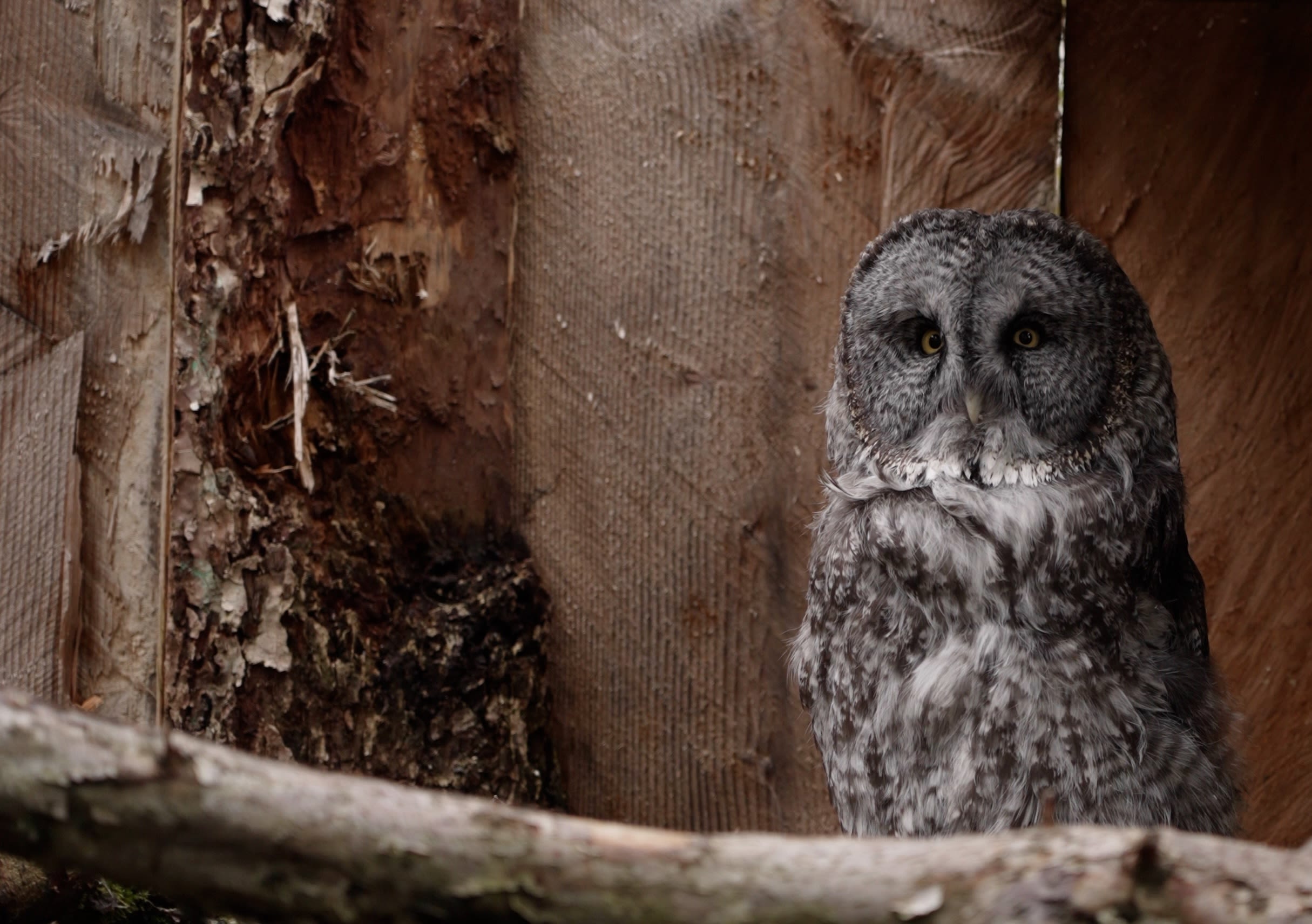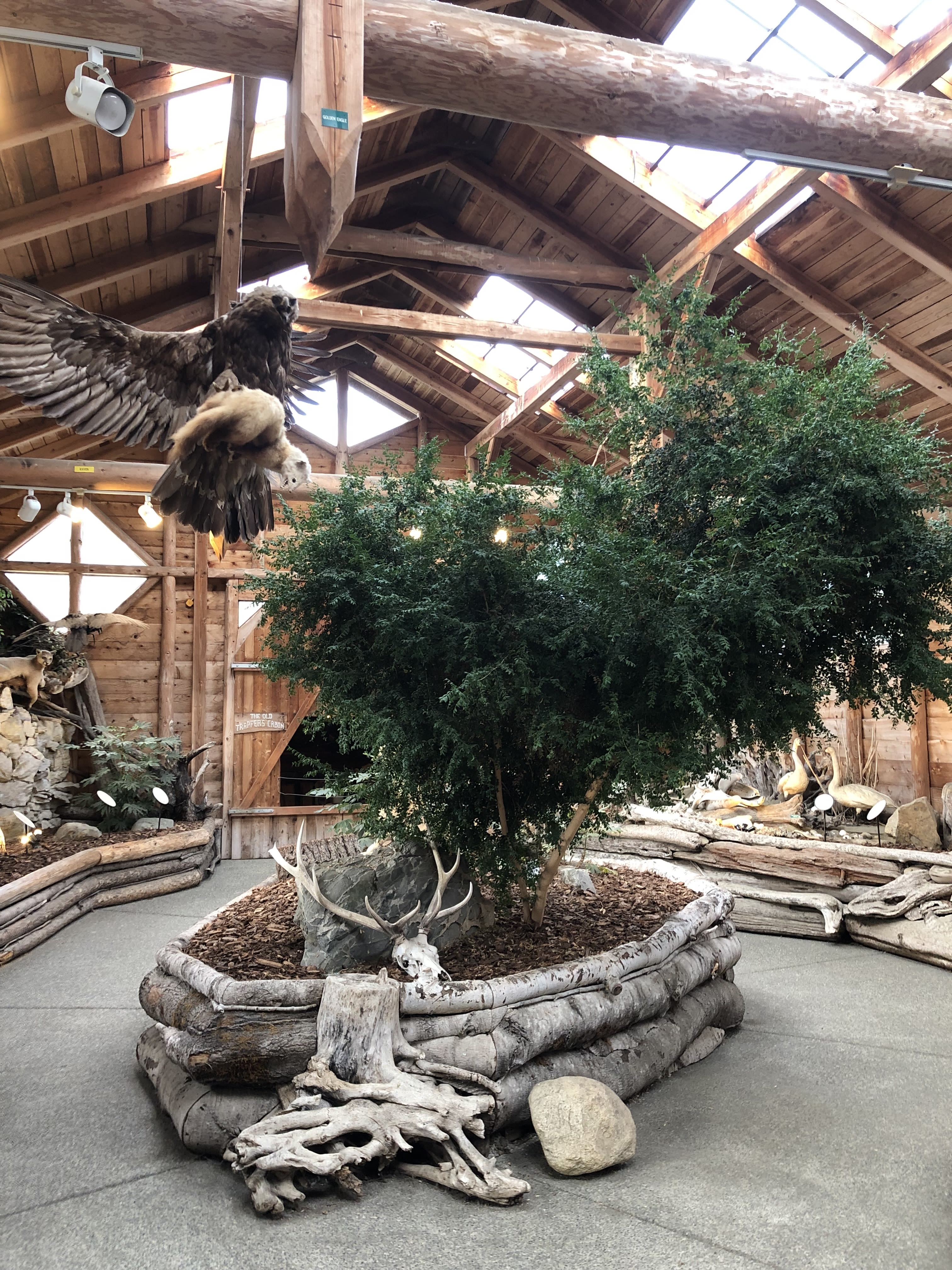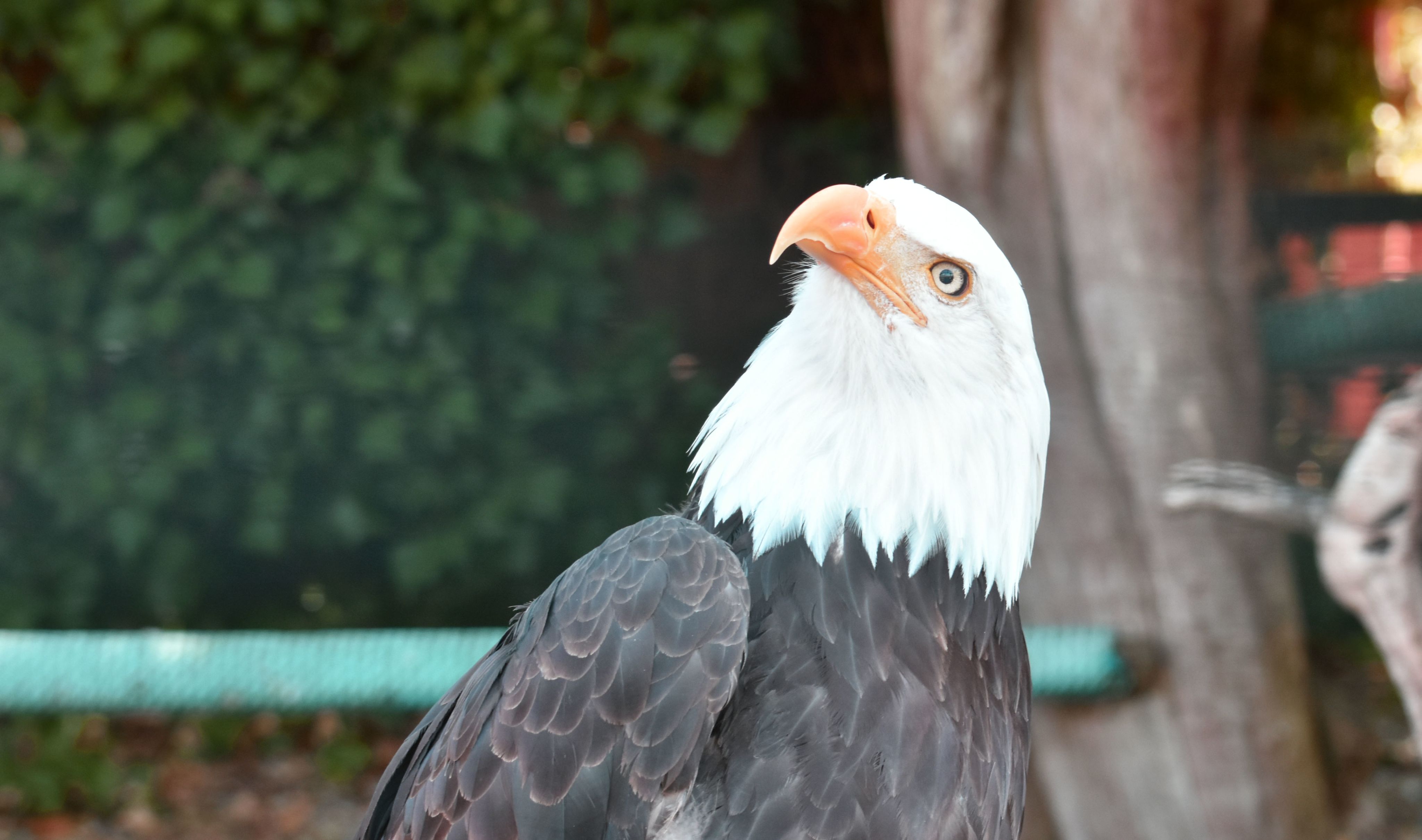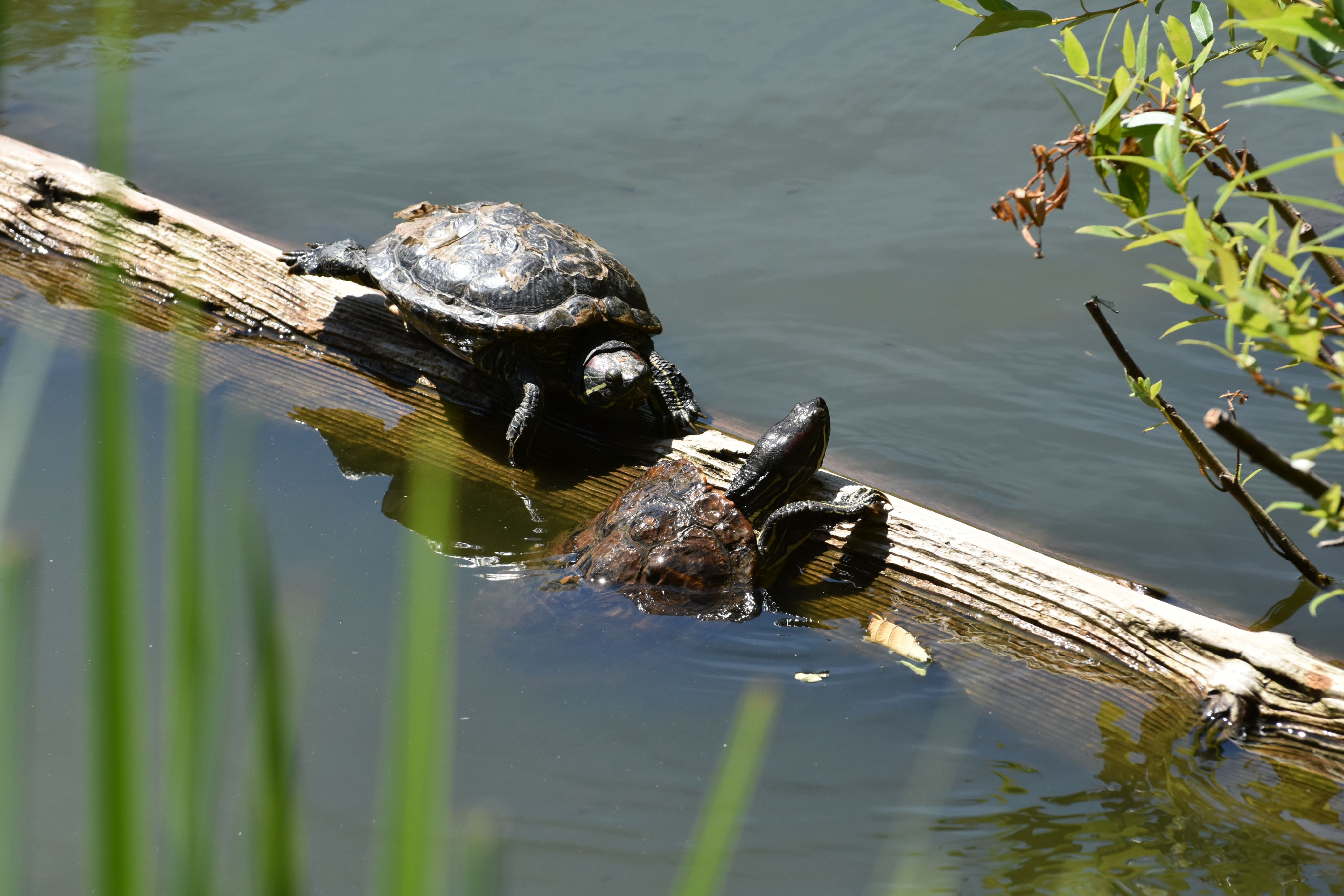A Place of Healing
Wounded souls get mended at the North Island Wildlife Recovery Centre on Vancouver Island.

It’s the middle of night in Errington, a town of about 2,900 on Vancouver Island. A panicked individual arrives at Robin and Sylvia Campbell’s door with a trumpeter swan in their truck. The bird was unconscious when the good Samaritan found it on the road and picked it up, but now the injured animal is awake and upset.
“How many times has that happened?” Robin says. “Many.”
The couple started taking in sick, hurt, and orphaned wildlife in the 1980s. Now their North Island Wildlife Recovery Centre cares for animals such as Rae, a black bear who most likely suffered a head trauma; Blizzard, a white raven with a compromised immune system; Boo, a great horned owl blind in one eye; brothers Jelly and Bean, barn owls bred in captivity who never learned how to hunt; and Sandor, a bald eagle whose injured wing prevents him from flying, though it doesn’t stop him from greeting visitors.

Photo: Sheri Radford
Photo: Sheri Radford

Photo: Sheri Radford
Photo: Sheri Radford
Unable to survive independently, these animals are now permanent residents of the centre, helping to teach the public about wildlife and environmental issues.
But the creatures that Robin gets most passionate about are the ones he can rehabilitate and release into the wild. He’s not the only one who gets excited—the centre’s annual eagle release always attracts crowds of eager onlookers.

Despite having no formal education beyond high school, Robin has become an expert at figuring out how animals think and what they need, black bears in particular.
“Very little is known about the black bear,” he says. “They carry so many secrets.” It was a cub named Knut who became Robin’s most influential teacher.
“When I had Knut, I was in his environment all the time,” Robin recalls. “I don’t think I slept there, but just about everything else.”
“He taught us,” Sylvia agrees.
“I knew his language, and he knew mine,” Robin adds.
Knut lived at the centre from the time he was a cub until he passed away in 2021 at age 25—a good lifespan for a black bear—and he taught the Campbells much during his life.
“We developed three different areas,” Sylvia says. The first is a nursery for cubs, who usually arrive at around three or four months old.
“We get them to eat on their own, right away.”
After the cubs grow a bit, they progress to a larger area filled with enticements such as water, logs, and interesting scents. Finally, once the cubs near 18 months old, they are fitted with tracking collars and moved to the open-air pre-release area.
To ensure the bears don’t become accustomed to humans, all monitoring is done via cameras.
What the couple learned from Knut has allowed them to help hundreds of other rescued cubs, including two that caught the attention of British comedian and animal-rights advocate Ricky Gervais.
In 2015, a black bear in Port Hardy on Vancouver Island was killed after becoming a nuisance. The B.C. Ministry of Environment ordered conservation officer Bryce Casavant to kill the bear’s two cubs as well, but Casavant refused; the ministry suspended him without pay, and the cubs ended up at the North Island Wildlife Recovery Centre. When Gervais heard about the situation, he phoned the Campbells.
“He got behind us,” Robin says. “Suddenly we had 300,000 people who followed his site who wanted us to save these bears, which caused a real inconvenience for the ministry.”
The cubs went on to live at the centre for almost a year before being released back into the wild, and Casavant was moved to a job in a different ministry.

When asked about other memorable moments from a lifetime of helping animals, Robin responds, “I’ve done things that nobody else got to do.”
As just one example, he talks about caring for a specific bald eagle, back in the days before 3D printers existed.
“His beak was blown off,” but Robin could visualize a prosthetic beak. He got a dentist involved and they set to work.
“In the end, we built the very first prosthetic eagle beak that’s ever worked in the world.”
Ground-breaking prosthetics, phone calls from celebrities, international media attention—Robin never expected anything like this when he was growing up.
Nobody had grand expectations for him, including Robin himself. “Stupid” was a label he often heard, and he admits that he half-expected to end up in jail someday.
“Once I found out that I was dyslexic, my life changed,” he says. “I found out that there were people who were very successful, who had the same challenge as me.”
Reading may be a struggle, but Robin has always been able to visualize things and work backwards to figure out how to achieve them.
“I can see the finished product, whatever it is,” he says. That talent, coupled with his empathy for animals, has led him to build enclosures tailored to each individual creature’s limitations.
“I’d study the animal, know exactly what his problem is.”
And no matter what type of animal, “All of them have exactly the same feelings as you: jealousy, love, anger, everything.” Robin notes, “Its life is just as important to it as yours is to you.”


The end result is a wildlife centre that feels thoughtfully designed and peaceful throughout.
“I’ve tried to build it as a place for people to come and heal as well as animals,” Robin says.
He describes how, more than once over the years, visitors who later admitted they were feeling suicidal have found the place to be therapeutic.
“They come and hang out here for four or five days,” and the animals work their healing magic.
He says, “I really do believe it’s a spiritual thing.”
“Animals are non-judgemental, and their beauty is unbelievable,” Sylvia says.
There’s no denying that it feels good for the soul, wandering around the centre’s eight acres of manicured grounds, pausing to admire local flowers in bloom, watching turtles glide around the pond, seeing eagles soar in the flight enclosure, and witnessing the resident animals calmly living their lives despite their wounded wings or missing eyes.
Perhaps motivated by these resilient creatures, Robin has done some public speaking over the years, visiting schools, universities, and even prisons, “letting people know that you can change. You can do whatever you want.”
He insists, “You can reinvent yourself. Don’t allow anybody to label you and dictate what your life’s going to be.”
Always changing, too, is the wildlife centre, as new exhibits and gardens are added. Picnic areas, a gift shop, and the Field of Stones rock cave for kids encourage families to linger a while.
Large signs explain what to do in situations such as finding an injured deer or seeing a bird hit a window. Other signs explain why domestic cats should be kept indoors, why carelessly discarded fishing gear can harm birds and turtles, why invasive plants and animals hurt the environment, and why apple cores tossed out car windows can lead to raptors getting hit by vehicles.
The Campbells’ house is tucked away on one side, behind a fence, and their living room on the upper floor opens into a two-storey space where Robin works with injured birds.
“You always have to be available,” he says. “It’s every day.”
The couple, now in their 70s, say they don’t regret the decades spent working constantly, juggling bills to pay for the animals’ care, never taking vacations.
“It’s been an amazing life,” Sylvia says.
“The greatest life,” Robin agrees. “And it ain’t over.”
